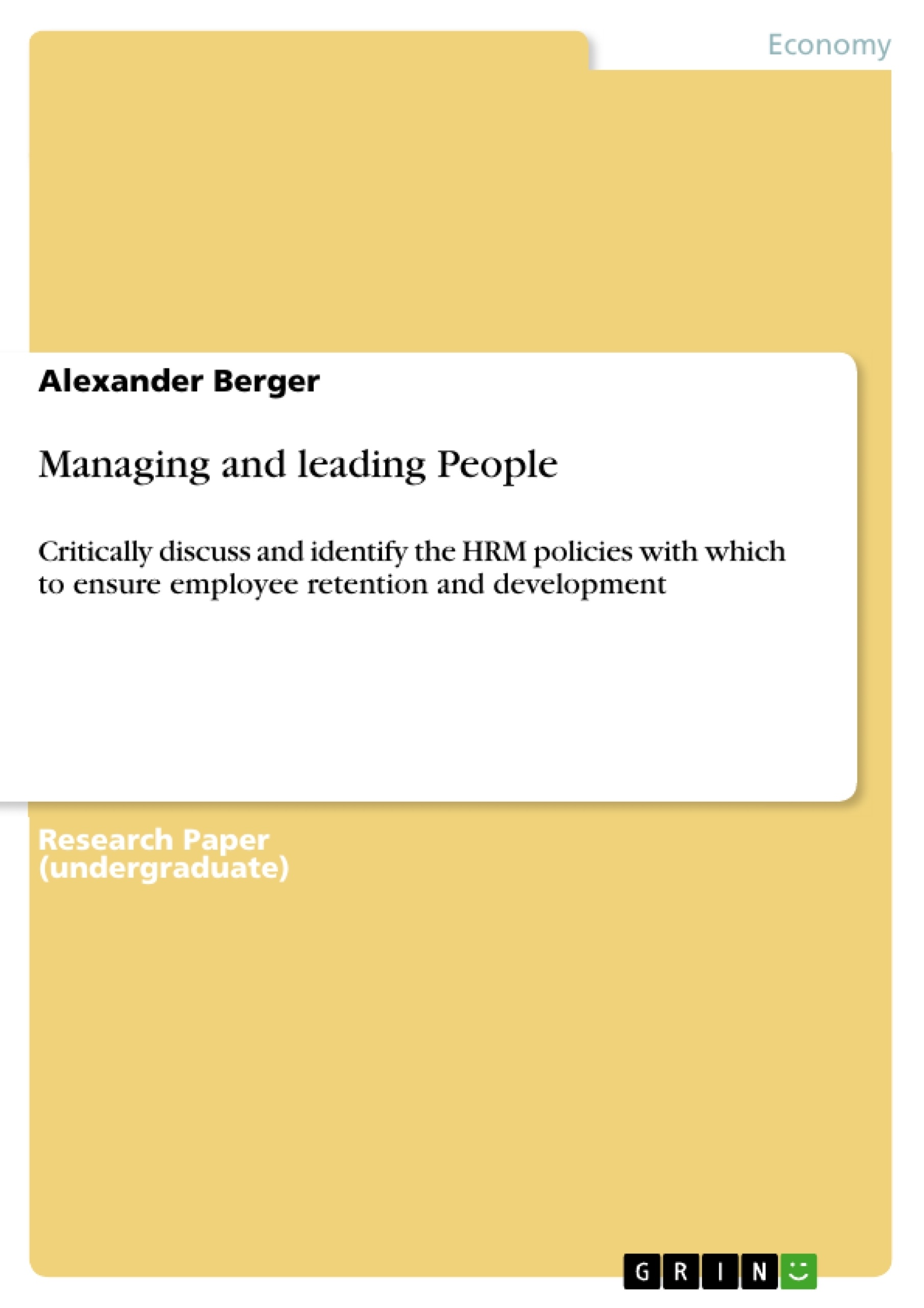Many organizations agree that employee turnover is a costly problem. Therefore, managers try to find ways in order to retain their employees within the organization. However, mangers have to ask themselves if all turnovers are avoidable or if there are circumstances where it is unavoidable to retain employees. It would not make sense to invest money in retention if the chances to retain employees are rather small. In addition, it might be favourable for an organization if a low performer leaves the organization. Therefore, managers have to make distinction between functional and dysfunctional as well as unavoidable and avoidable turnovers in order to create strategies to retain people. Furthermore, they should contrast turnover cost and replacement cost and should find out which investment will give more value to the organization in the long-term. Nevertheless, there are organizations where a high turnover rate is not unusual. Furthermore,there are many business sectors where the labour market is limited and organizations must find new strategies to retain as well as recruit talented employees. Obviously, organizations differ from each other and have different resources to retain and recruit employees. Due to this, the best practise approach might not lead for all organizations to an positive outcome. Therefore, organisations must find out which approach fits best to their culture, business, etc. Furthermore, considering retaining managers must ask themself in what stage starts retaining. Does retention start at that time the employee starts his work or does retention start even earlier? Moreover, as organizations operate in fast changing environments they also have to consider that the people who live within these environments are also changing their needs and attitudes. Demographic factors force managers to review their retention policies. Efficient retention policies in the past might not lead to the same success as before. Last but not least, organizations have to offer incentives to their employees. There are lot of different incentives managers can use to retain employees within an organization as well as to motivate employees in order to guarantee a good overall performance in the future. However, the outcome of providing these incentives can be positive as well as negative, which managers certainly must take into consideration.
Inhaltsverzeichnis (Table of Contents)
- Executive Summary
- Introduction
- Employee Turnover
- Recruitment
- Job Analysis
- First impression
- Demographic forces
- Hiring the right people
- Incentives
- Premiums & Salary
- Childcare
- Cooperative management style – communication
- Workplace safety
- Supporting social relationships & Working time regulation
- Further learning and development
- Conclusion
Zielsetzung und Themenschwerpunkte (Objectives and Key Themes)
This report explores the complexities of employee turnover, focusing on understanding its various types, costs, and impact on organizations. It aims to provide a framework for managers to analyze and address turnover effectively, emphasizing the importance of strategic retention efforts. The report also delves into the recruitment and selection process, highlighting crucial aspects like demographic forces and the significance of creating a positive first impression. Finally, it examines various incentives that organizations can implement to motivate and retain valuable employees.
- Types and Classification of Employee Turnover
- The Impact of Turnover on Organizational Performance
- Effective Recruitment and Retention Strategies
- The Role of Demographic Forces in Employee Retention
- Incentives and Their Influence on Employee Motivation and Retention
Zusammenfassung der Kapitel (Chapter Summaries)
- Executive Summary: This chapter provides a concise overview of the report's structure and key themes. It introduces the three main sections of the report: employee turnover, recruitment, and incentives.
- Introduction: This chapter sets the stage for the report by acknowledging the significant cost of employee turnover for organizations. It explores the distinction between functional and dysfunctional turnovers and the importance of considering both avoidable and unavoidable turnover scenarios. The chapter highlights the diverse approaches to managing turnover, emphasizing the need for organizations to tailor strategies based on their specific context.
- Employee Turnover: This chapter delves into the various reasons why employees leave their jobs, including factors like better pay, personal reasons, lack of motivation, and poor management practices. It introduces different types of turnover, namely voluntary and involuntary turnover, and provides a visual representation of their classification.
- Recruitment: This chapter focuses on key considerations during the recruitment and selection process, emphasizing the need to retain new hires in the long term. It addresses demographic forces that influence retention strategies and underscores the importance of creating a positive first impression to attract and retain talent.
- Incentives: This chapter presents a range of incentives that organizations can employ to motivate and retain their employees. It discusses the potential benefits and drawbacks of these incentives, including premiums and salaries, childcare benefits, collaborative management styles, workplace safety measures, support for social relationships, working time regulation, and opportunities for further learning and development.
Schlüsselwörter (Keywords)
Employee turnover, retention strategies, recruitment, selection, demographic forces, incentives, motivation, job satisfaction, organizational performance, first impression, cost analysis, functional turnover, dysfunctional turnover, avoidable turnover, unavoidable turnover.
- Quote paper
- Alexander Berger (Author), 2011, Managing and leading People, Munich, GRIN Verlag, https://www.grin.com/document/173499



